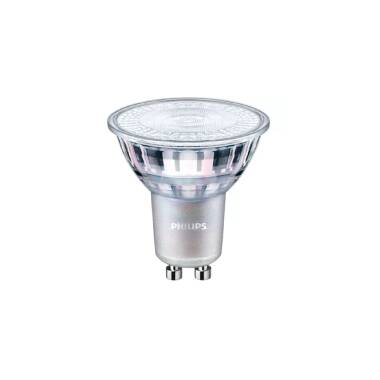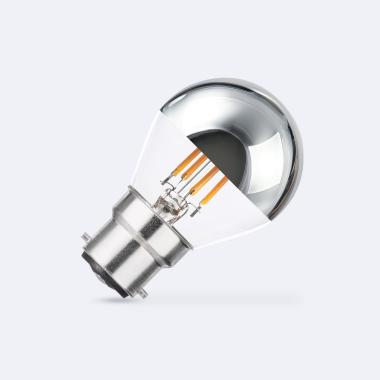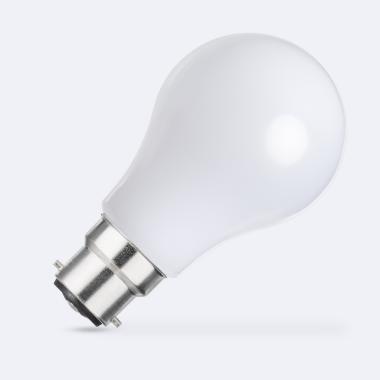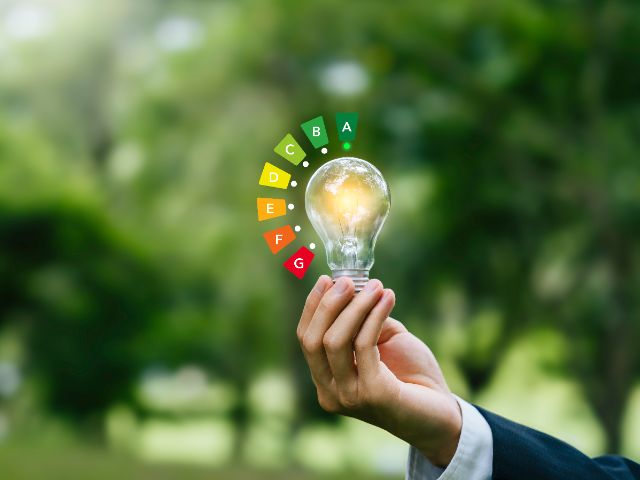When it comes to energy consumption at home, light bulbs often go unnoticed, but their impact is more significant than many people realize. Changing a single light bulb may seem trivial, but it is a first step toward lowering your energy bill, especially if we are talking about bulbs that are on for many hours a day.
In this article, we explain clearly how much a bulb consumes, how to calculate it and, most importantly, which bulbs consume less. In addition, we will show you real comparisons and tables with consumption data by type and power.
Table of Contents
What does the consumption of a light bulb depend on?
The consumption of a light bulb is not a fixed value. It can vary according to different aspects, and understanding them is key to optimize your energy expenditure.
Factors that influence consumption: type, power and hours of use.
- Type of bulb: Not all bulbs are the same. An incandescent bulb can consume up to 5 times more energy than an LED to provide the same amount of light.
- Power (W): Expressed in watts (W), it indicates how much energy a bulb needs to operate. The higher the wattage, the higher the consumption.
- Hours of daily use: If a bulb is on for 8 hours a day, its consumption will be much higher than one that is used for only 1 or 2 hours.
Quick consumption calculation
To get a quick idea of the consumption of a light bulb, simply multiply the power (W) by the time it remains on (hours per day). For example, a 60W light bulb turned on for 5 hours a day consumes:
60W×5h=300Wh=0.3kWh/día
If we multiply that by the number of days of the month, we see the impact on the bill of its consumption.
Consumption by type of bulb
Let’s see how consumption varies according to the type of bulb. This aspect is fundamental to choose the best bulb in terms of efficiency and savings.
Incandescent bulbs
Incandescent bulbs are the oldest and least efficient bulbs. Their technology is based on heating a filament until it emits light, which generates a lot of heat and wastes energy. Their average consumption is around
| Power (W) | Hours/day | Days/month | Monthly consumption (kWh) |
|---|---|---|---|
| 60W | 4 h | 30 days | 7.2 kWh |
| 100W | 5 h | 30 days | 15 kWh |
These bulbs consume a lot of energy and, in fact, are not manufactured or marketed.
Halogen bulbs
An evolution of incandescent bulbs, somewhat more efficient, but still far from the best current options. Monthly consumption would be as follows:
| Power (W) | Hours/day | Days/month | Monthly consumption (kWh) |
|---|---|---|---|
| 42W | 4 h | 30 days | 5.04 kWh |
| 70W | 5 h | 30 days | 10.5 kWh |
They consume slightly less than incandescent lamps, but are still not recommended.
Energy-saving light bulbs (CFLs)
Also called compact fluorescent, these bulbs were very popular because of their lower consumption compared to incandescent bulbs.
How much does an energy-saving bulb consume?
On average, between 11W and 23W to give the same light as a 60W or 100W incandescent, which translated into kWh per month results:
| Power (W) | Hours/day | Days/month | Monthly consumption (kWh) |
|---|---|---|---|
| 15W | 4 h | 30 days | 1.8 kWh |
| 20W | 5 h | 30 days | 3 kWh |
They are still common, although they are being replaced by LEDs due to efficiency and durability issues.
LED bulbs: the most efficient option
LED bulbs are currently the most recommended bulbs for their incredible efficiency and lifespan.
What makes them better?
- They consume between 4W and 10W to provide the same light as a 60W and 100W incandescent bulb.
- They do not generate heat, which makes them safer and longer lasting.
- Some can last more than 25,000 hours.
Estimated consumption:
| Power (W) | Hours/day | Days/month | Monthly consumption (kWh) |
|---|---|---|---|
| 6W | 4 h | 30 days | 0.72 kWh |
| 10W | 5 h | 30 days | 1.5 kWh |
Recommended products

In Stock, delivery in 15-20 days
5.79 £
LED Bulb GU10 PAR16 3.7W 60º Dimmable 365lm PHILIPS Master Value LEDspot MV
View product

In Stock, delivery in 24/48h
1.66 £
B22 LED Bulb 4W G45 400 lm Chrome Reflect
View product

In Stock, delivery in 24/48h
1.5 £
B22 LED Bulb 8.5W A60 1020lm
View product

In Stock, delivery in 24/48h
1.58 £
B22 LED Bulb 1W A60 70lm
View product
How to calculate the consumption of a light bulb
Knowing how much a light bulb consumes is much easier than it seems. You only need three pieces of information:
- The power of the bulb (in watts, W).
- The number of hours it is on per day
- The number of days per month (or per year) you use it
Basic formula for calculating light bulb consumption
Consumption (kWh) = (Power in W / 1000) × Hours of use × Days
Let’s go with a practical example:
If you have an 8W LED bulb turned on 5 hours a day for a month (30 days) its consumption will be:
(8W / 1000) × 5h × 30d = 1.2 kWh/month
Multiplying this consumption by the price per kWh (e.g. 0.20 €/kWh), you get the cost:
1.2 kWh × 0.20 €/kWh = 0.24 €/month.
Comparison of monthly cost by type of bulb
| Type of bulb | Power (W) | Hours/day | kWh/month | Monthly cost (€) |
|---|---|---|---|---|
| Incandescent | 60W | 5 | 9 kWh | 1,80 € |
| Halogen | 42W | 5 | 6,3 kWh | 1,26 € |
| Low consumption | 15W | 5 | 2,25 kWh | 0,45 € |
| LED | 8W | 5 | 1,2 kWh | 0,24 € |
As you can see, LED bulbs consume up to 7 times less than an incandescent bulb. If you have many bulbs at home, the savings can be brutal.
Which bulbs consume less energy?
The million dollar question. After looking at real figures, the answer is clear: LED bulbs consume the least energy. But why exactly?
Luminous efficiency comparison
Luminous efficiency is measured in lumens per watt (lm/W), i.e. how much light a bulb produces for each watt it consumes.
| Bulb Type | Lumens (lm) | Wattage (W) | Efficiency (lm/W) |
|---|---|---|---|
| Incandescent | 800 | 60W | 13 lm/W |
| Halogen | 800 | 42W | 19 lm/W |
| Low consumption | 800 | 15W | 53 lm/W |
| LED | 800 | 8W | 100 lm/W |
LEDs not only consume less, they give the same amount of light while using less power, but they are also more durable and require less maintenance.

Advantages of LED bulbs in savings and durability
If you are thinking of changing all the light bulbs in your home, here’s what you gain by using LEDs:
Energy savings
LED bulbs consume up to 85% less energy than incandescent bulbs, which translates into a significant reduction in electricity bills. They also generate much less heat, which helps keep spaces cooler, especially in summer, relieving the burden on air conditioning.
Increased durability
One of the great advantages of LED bulbs is their long life, which can range from 15,000 to 30,000 hours, compared to just 1,000 hours for an incandescent bulb. This means fewer replacements, less maintenance and a noticeable reduction in waste.
Instant on
Unlike compact fluorescent bulbs (CFLs), LEDs turn on instantly, with no flickering or delay. This makes them a more convenient and efficient choice for any space.
Modern technology and connectivity
LED bulbs not only save energy, they also represent an advanced technology option. Many are smart, dimmable, compatible with home automation systems, and can be controlled by cell phone or voice. In addition, there are RGB models that allow you to change the color of the light to create different atmospheres.
Frequently asked questions about light bulb consumption
How much does an LED bulb consume per hour?
LED bulbs are known for their low energy consumption. The hourly consumption depends on their wattage, but here is a reference:
- 6W LED bulb → 0.006 kWh per hour.
- 10W LED bulb → 0.010 kWh per hour
In summary, if you leave a 10W LED bulb on for 10 hours, the total consumption will be:
10W x 10 hours = 100Wh = 0.1 kWh
At the average price of 0.20 €/kWh, that would cost you only 0.02 €. In other words, leaving an LED bulb on for a large part of the day hardly affects the bill.
How much does an energy-saving bulb consume?
Energy-saving or compact fluorescent light bulbs (CFLs) consume less than halogen bulbs and much less than incandescent bulbs, but more than LEDs.
Their typical consumption ranges from 11W to 23W, depending on the model. For some common models we will have an hourly consumption of:
- 15W CFL → 0.015 kWh/h
- 20W CFL → 0.020 kWh/h
Remaining the estimated monthly consumption (5 h/day):
| Power | Hours/day | Days/month | Monthly consumption | Monthly cost |
|---|---|---|---|---|
| 15W | 5 h | 30 days | 2.25 kWh | 0,45 € |
| 20W | 5 h | 30 days | 3.0 kWh | 0,60 € |
While efficient, LED bulbs are still more economical and perform better.
What consumes less: LED or energy-saving bulb?
LED bulbs are clearly more efficient than energy-saving bulbs. Let’s compare them directly:
| Feature | CFL bulb (energy saving) | LED bulb |
|---|---|---|
| Average power | 15W | 6-8W |
| Lifetime | 8.000-10.000 h | 15.000-30.000 h |
| Instant-on | No | Yes |
| Special recycling | Yes (contains mercury) | No |
| Monthly consumption (5h/day) | 2.25 kWh | 1.2 kWh |
As you can see, LEDs consume 40-50% less and have many more advantages. They are the best investment in the medium and long term.
How do I know if my bulb is using too much energy?
It is not always obvious, but some signs can indicate that a bulb is using more energy than it should. Identifying these signs will help you optimize your electricity consumption and save on your electricity bill.
Signs of high energy consumption
- Type of bulb: If you are still using incandescent or halogen bulbs, you are using inefficient models. These technologies consume much more energy than modern options.
- Excess heat: If the bulb gets too hot to touch, much of the energy is being lost as heat instead of being transformed into light.
- Loss of brightness: When a bulb illuminates less brightly than before, it is probably at the end of its useful life and its performance is no longer optimal.
What can you do about it?
- Check the power (W): The more power, the higher the consumption. A low wattage LED bulb can offer the same brightness as a much more powerful incandescent bulb.
- Make the switch to LED: Replacing old bulbs with LED equivalents is one of the most effective ways to reduce energy consumption.
- Optimize usage: Install motion sensors or timers to prevent lights from being left on unnecessarily.
If you want to know the real cost of a light bulb, or any other electrical device, you can use smart plugs with consumption meters. This way you will know exactly how much energy you are using in real time.
Conclusion on the keys to choosing energy-efficient light bulbs
Throughout this article we have seen that choosing the right light bulb not only has an impact on the lighting in your home, but directly on your pocket. The difference in consumption between an incandescent bulb and an LED bulb may seem small per hour, but if we multiply it by the number of bulbs in the house and the number of hours per month, the result is shocking.
If you are thinking about optimizing energy consumption at home, here are some key points to keep in mind:
1. Consumption depends on several factors
Not all light bulbs use the same amount of energy. The type of technology, the power in watts (W) and the time they remain on have a direct influence on electricity consumption.
2. Avoid incandescent and halogen bulbs.
Although still used in some homes, these bulbs are highly inefficient: they consume a lot of energy and have a very short lifespan. Replacing them should be a priority.
3. CFLs are no longer the best option
Energy-saving light bulbs, also known as CFLs or compact fluorescents, were an improvement at one time, but have been overtaken by more modern technologies. They also contain small amounts of mercury, which complicates their recycling.
4. LEDs are the most efficient alternative
LED bulbs are currently the best option on the market. They consume very little energy, last up to 25 times longer than incandescent bulbs and are increasingly affordable. They also offer dimmable options, RGB and compatibility with smart systems.


